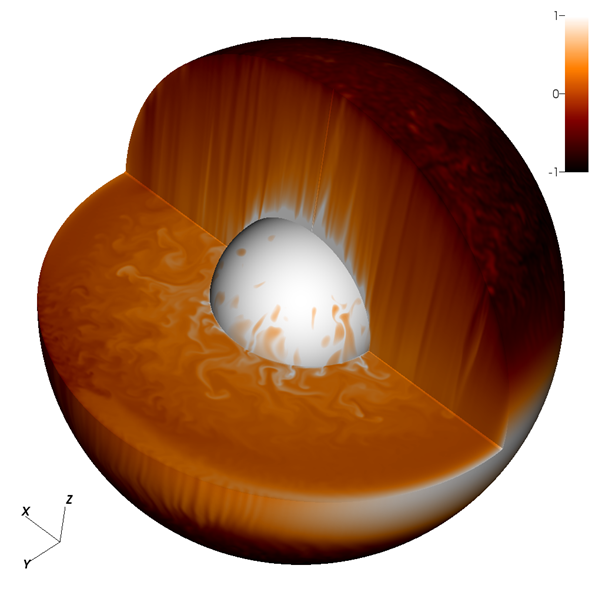Laterally Varying Convection in Earth’s Core
- Academic lead
- Dr Jon Mound, School of Earth and Environment, J.E.Mound@leeds.ac.uk
- Co-supervisor(s)
- Dr Chris Davies, School of Earth and Environment, C.Davies@leeds.ac.uk, Prof Steve Tobias, School of Mathematics, S.M.Tobias@leeds.ac.uk
- Project themes
- Geophysical and Astrophysical Flows
Convection within Earth’s fluid core generates the planetary magnetic field; spatial and temporal variations of the geomagnetic field can thus be used to gain insight into the dynamics of this otherwise inaccessible region. Seismic, geomagnetic, and geodynamic observations indicate that lateral variations in heat flow are imposed on the core by the overlying solid mantle. This forcing, together with bottom-driven convection, produce a rich variety of dynamical behaviour that is still poorly understood.
Previous simulations by the group in Leeds indicate that combining bottom-driven and boundary-forced convection can significantly influence core fluid dynamics, e.g. by changing heat transfer and flow speeds, and inducing relatively quiescent regions at the top of the core where thermal convection is suppressed. This project will combine numerical and theoretical analysis to produce a systematic study of the influence of boundary control on the dynamics of non-magnetic and magnetic rotating convection to investigate the potential for these dynamics to explain observed features of the Earth’s magnetic field. Depending on the project trajectory and student interests, comparison with laboratory experiments is possible.

Figure 1: Output from a simulation of rotating convection with lateral boundary heating. Colours represent temperatures (dark = cold, light = hot).
